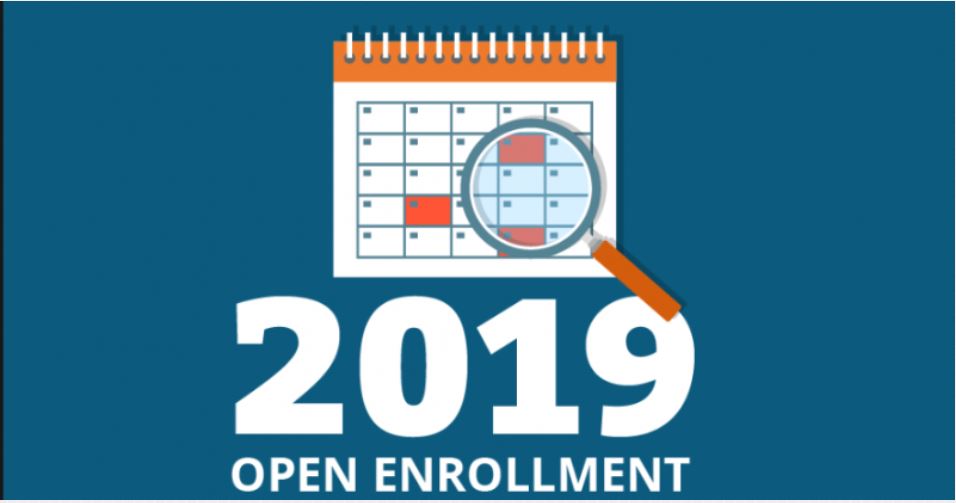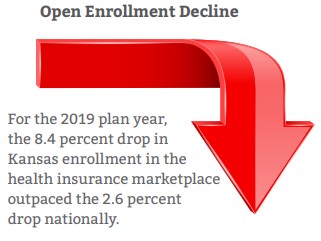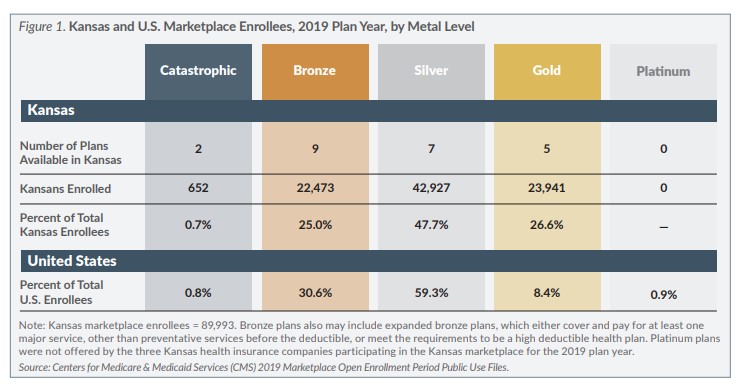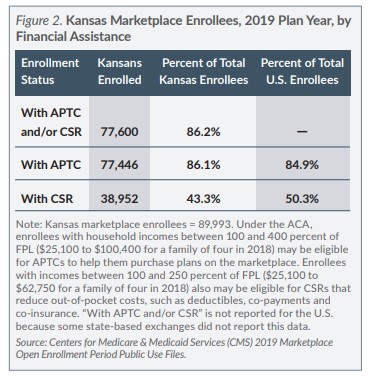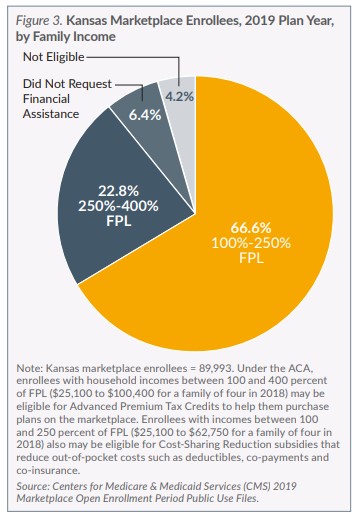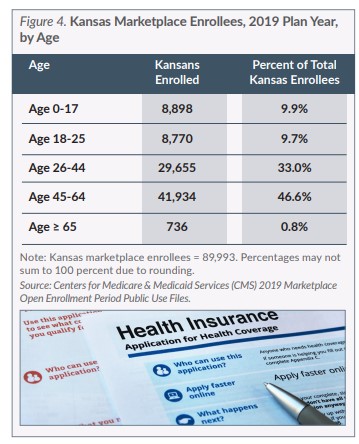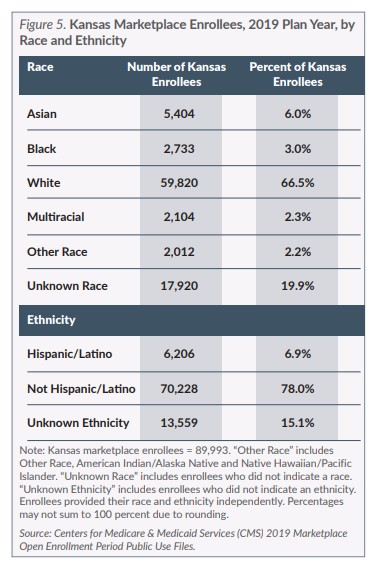The Centers for Medicare & Medicaid Services (CMS) released final summary enrollment data on March 25, 2019, for the sixth open enrollment period of the health insurance marketplace created by the Affordable Care Act (ACA). This issue brief examines the results for the 2019 plan year, during which 89,993 Kansans — and 11.4 million consumers nationwide — selected or were automatically re-enrolled in a marketplace plan. The 8.4 percent drop in Kansas enrollment outpaced the 2.6 percent drop nationally (306,034 fewer enrollees).
Like last year, the open enrollment period for the 2019 plan year lasted 45 days, from November 1, 2018, through December 15, 2018, for coverage beginning on January 1.
The ACA also allows consumers to enroll for 2019 marketplace coverage outside of the open enrollment period if they experience a qualifying “life event” (e.g., loss of previous coverage or change in family status) and enroll within 60 days from the date of that qualifying event.
For the 2019 plan year, three insurers offered coverage on the marketplace in Kansas. Medica Insurance Company offered plans in every county in the state. Blue Cross and Blue Shield (BCBS) of Kansas offered plans in all counties except Johnson and Wyandotte. Ambetter from Sunflower Health Plan offered plans in Johnson, Wyandotte, Leavenworth and Miami counties.
Enrollment
The data from CMS show that 118,463 Kansans applied for a marketplace plan for 2019 and 109,277 were determined eligible to enroll, but only 89,993 Kansans completed their enrollment by selecting a plan or were automatically re-enrolled. CMS has not yet released information on the percentage of enrollees who have “effectuated” their enrollment by paying their premiums. This year, less than one-quarter (22.2 percent or 19,958) of Kansas enrollees were “new consumers” who did not have marketplace coverage in 2018. The other three-quarters (77.8 percent or 70,035) were enrolled last year. Of these returning enrollees, there were 52,261 active re-enrollees, of which one-third (32.4 percent or 16,953) switched plans. The remaining 17,774 returning enrollees were automatically re-enrolled by the marketplace in the same or a similar plan to the previous year.
Plan Selection
During the 2019 open enrollment period, 23 insurance plans in four “metal” levels (catastrophic, bronze, silver and gold) were offered on the Kansas marketplace. Almost half (47.7 percent or 42,927) of Kansas enrollees selected a silver plan, which covers about 70 percent of health care expenses for a typical population, and 26.6 percent (23,941) selected a gold plan, which covers about 80 percent of health care expenses for a typical population (Figure 1). Similar to previous years, a small percent (0.7 percent) of enrollees selected a catastrophic plan, which covers essential health benefits and certain preventive services at no cost, but has low monthly premiums and very high deductibles. The plan is available for people under age 30 or of any age with a hardship or affordability exemption.
